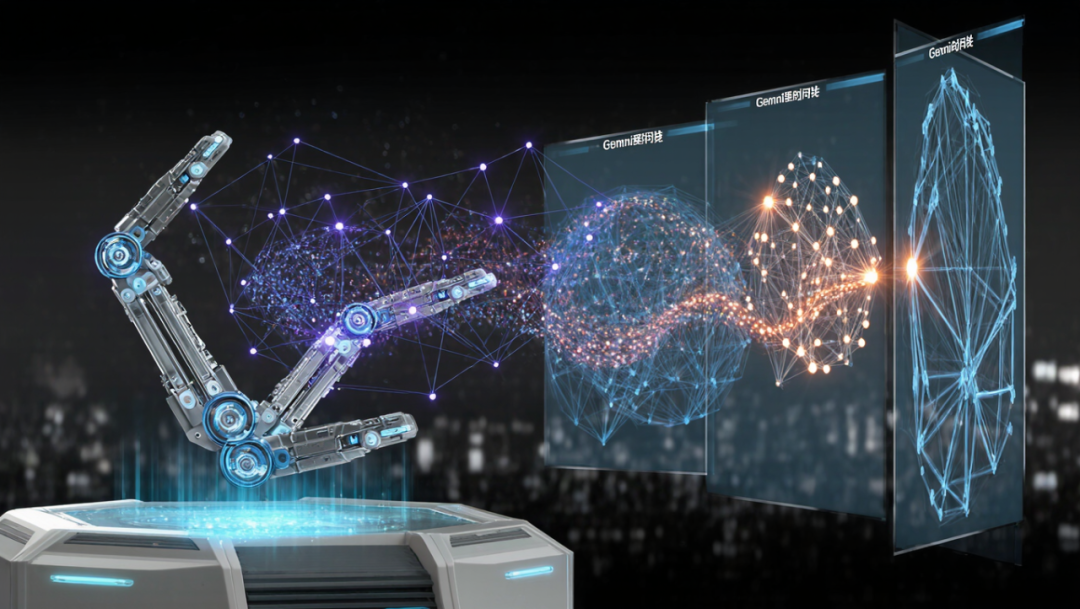Deep Research Domestic Free Version Unveiled: Myta AI Aims to Revolutionize Knowledge Work Paradigms
![]() 07/21 2025
07/21 2025
![]() 551
551

Deep Research endeavors to mimic the research methodology of human experts, culminating in the production of a structured, in-depth report. Like any AI application, it amplifies the capabilities of the proficient.
Author | Xiaowei
In the AI landscape of 2025, the spotlight shifts from a competition of model parameters to Agent-centric, application-oriented exploration. Amidst the buzz around general Agents, Myta AI's "Deep Research" feature, launched on July 15, carves a niche with a focused, vertical breakthrough: in-depth information research and analysis.
Myta's "Deep Research" stands as the first fully free and openly accessible Deep Research application in China. Through process visualization and a freemium model, it aims to redefine the synergy between humans and AI in knowledge work.

"Deep Research":
From Answer Engine to Autonomous Research Assistant
To grasp Myta AI's new offering, one must first understand the positioning of "Deep Research" within the industry. In early February, OpenAI introduced Deep Research as an Agent, garnering praise for its deep analysis and broad search capabilities.
Deep Research signifies an advancement in the AI information acquisition model, evolving AI from a passive "answer engine" to an active "research partner".
Traditional search engines excel at providing links or AI-summarized answers, centered on "information retrieval" and "information organization".
Conversely, "Deep Research" falls under AI Agents, emphasizing "task decomposition" and "autonomous execution".
Industry leaders like OpenAI aim for their Deep Research feature to replicate the research process of human experts: selecting complex topics, autonomously planning research steps, conducting multi-round information searches, cross-verifying sources, integrating and analyzing data, and ultimately delivering a structured, comprehensive report.
This capability elevates AI from simple Q&A tasks to assisting in complex analytical tasks.
However, this robust capability introduces new challenges:
1. High computational costs lead to its inclusion mostly in paid subscription services, limiting accessibility.
2. The "black box" issue hinders user understanding and trust in AI's complex decision-making, making result reliability and verifiability a concern.

Myta's Approach:
Free Strategy and Low-Resource Technology Advocacy
Myta's "Deep Research" adopts distinctive strategies:
1. It pioneers free, publicly accessible deep research functionality in the domestic market, aiming to swiftly acquire users through an inclusive strategy and iteratively refine product direction based on user feedback.
2. As a startup, Myta self-identifies as a "GPU Poor team" and reduces resource consumption by segmenting deep research into multiple subtasks for staged reinforcement learning.
3. It dynamically visualizes the analytical process's thinking chain through mind mapping, offering complete source information and producing research reports with clear logical structure and aesthetic appeal.
These initiatives suggest Myta is exploring a path of inclusive, differentiated competition among giants through cost control and compelling analytical results presentation.

Unveiling the "Thinking Chain":
Productizing the Reasoning Process
A significant differentiator of Myta's "Deep Research" is the visualization of the "problem chain" or "thinking chain".
When users input complex tasks, like "summarizing release dates and advantages of each Google Gemini model version," the system doesn't immediately present the final answer but real-time reasoning paths on a dynamic canvas. This includes:
• Task Decomposition: Breaking down the macro problem into specific sub-problems like "Gemini 1.0 release date and features," "Gemini 1.5 Pro technological breakthroughs," "Gemini 2.0 Flash model positioning," etc.
• Dynamic Planning: Real-time generation of new research branches based on retrieved information, marking nodes with insufficient information or conclusions needing improvement, making the research path transparent. "Deep Research" uses different colors to display thinking chains: purple for conclusions needing improvement, green for clear conclusions, and blue for ongoing thinking.
• Source Tracing: Each sub-conclusion is accompanied by a clear source link, allowing users to verify at any time, ensuring research process verifiability.
This design transforms the previously invisible AI "thinking" process into an interactive, understandable product feature.
From a product logic perspective, this design values both "process" and "result," emphasizing that in complex research, the rationality of the research path is as crucial as the accuracy of the final conclusion.
Reshaping the Knowledge Workflow:
From Executor to Designer
The proliferation of "Deep Research"-type tools will profoundly transform knowledge workers' workflows. It aims to free researchers from repetitive, tedious data collection and information organization, enabling them to focus on high-value-added aspects. The future competitiveness of knowledge workers will shift:
• From "information retrieval ability" to "problem definition ability": The key skill shifts from knowing where to find answers to posing precise, profound, and valuable research questions.
• From "research execution" to "design and review": Human value will increasingly lie in planning research frameworks, overseeing AI execution, critically examining AI conclusions and evidence chains, and making decisions integrating human experience and value judgments.
Ultimately, like any AI tool, Deep Research amplifies the capabilities of the proficient. It's best suited for expert users with research frameworks and systematic knowledge, assisting them in delegating time-consuming, labor-intensive information collection and verification to AI research assistants.
Conclusion
Rather than competing head-on with giants in general capabilities, Myta's "Deep Research" has taken a different path, making "process transparency" and "user experience" its core strategies, entering the market with a freemium model.
Whether "Deep Research" can go further remains to be seen, including the true value of research results and user stickiness, the sustainability of its technical optimization under the freemium model, and Myta's ability to find a sustainable commercialization path as the market transitions from experimenting with "Deep Research" to adopting it as a habit.
Regardless of the outcome, Myta's "Deep Research" offers valuable industry exploration: in an era of rapid AI development, it returns to user value, dedicated to solving real pain points—enhancing the efficiency of credible, high-quality knowledge work.








